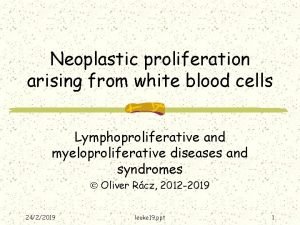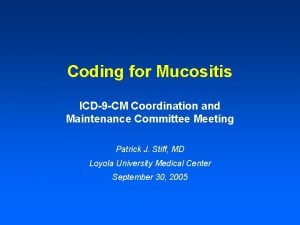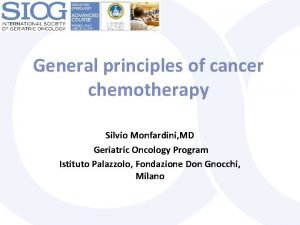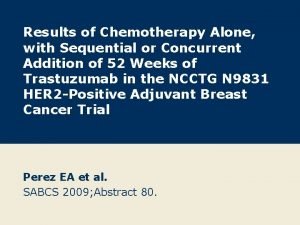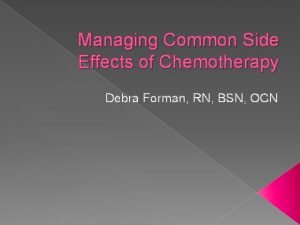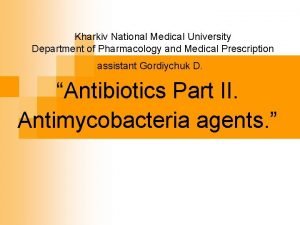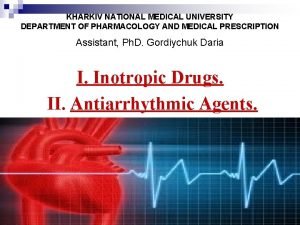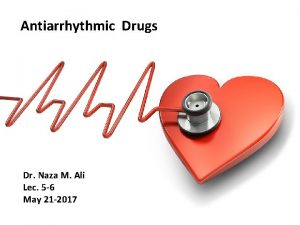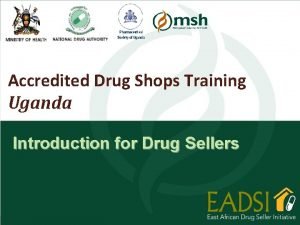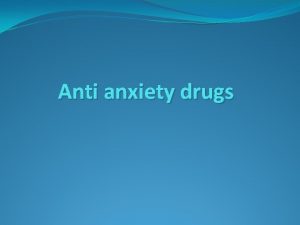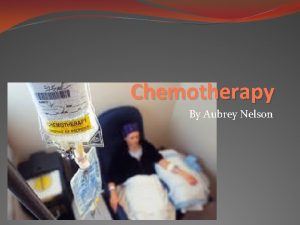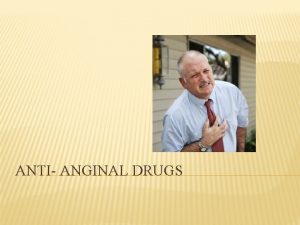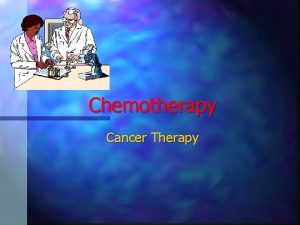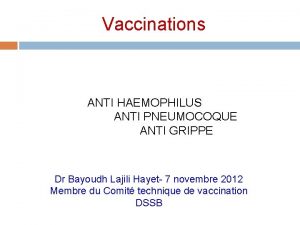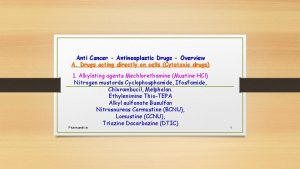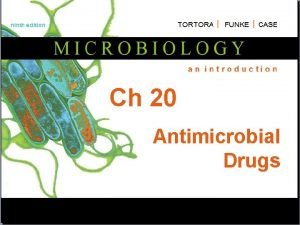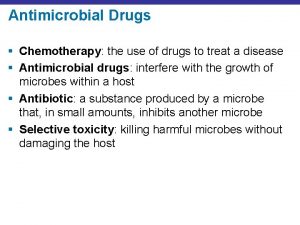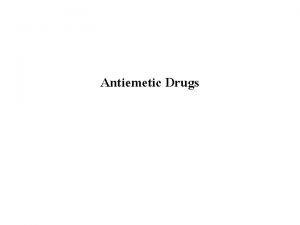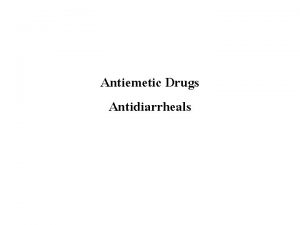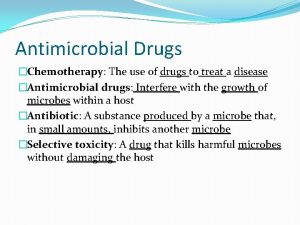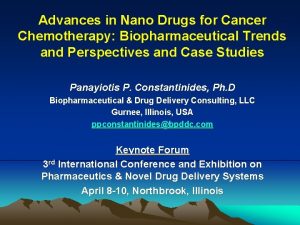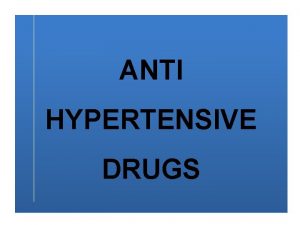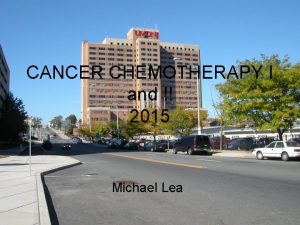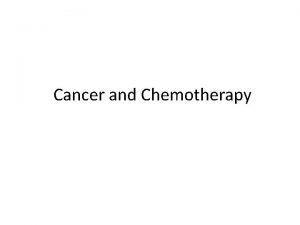Anti Neoplastic Drugs Cancer Chemotherapy Class T Y


























- Slides: 26

Anti- Neoplastic Drugs ( Cancer Chemotherapy) Class- T. Y. B. Sc. Prof. L. P. Sutar ( M. Sc. NET-JRF) M. P. A. S. C. College Panvel, Dist- Raigad

Idea of malignancy Ø Cancer is not one disease, but a group disease affecting the different organs and system of the body. Ø During normal growth , a cell of an organism divides at the required rate depending on the need of organism.

Idea of malignancy Sometimes the cell divides abnormally at a much higher rate than normal cell division leads to formation of tumor. This is called malignancy of the cell. Ø However, all tumors are not cancerous. Ø Cell growth and division absent the proper signals. Ø All tumor cells show the six hallmarks of cancer. Ø

Types of tumor 1) A Benign( Non-Malignant ) tumor Ø This tumor grows slowly and may become large. Ø It don't spread to other areas. Ø This type of tumor( Cancer) is curable. Ø Most of the tumors are this type of tumor.

2) Cancerous ( Malignant ) tumor Ø This tumor begins as a small growth. Ø Initially, it grows slowly and then rapidly. Ø Later on it spreads to the neighbouring tissues just like the root of tree. Ø In last stage the cells break away from it and migrate through blood stream to other parts of the body causing secondary growth. Ø This is fatal stage and death occur when this stage reached

Cancer and its Causes Definition of cancer “ an unorganized growth of cells, in which controlling and regulating mechanism have disappeared or have become ineffective’’ Or Cancer is defined “abnormal growth of cells or uncontrolled growth of cells”

Causes of cancer q The exact cause of cancer are not known, however several factors are known to be producing cancer or carcinogenic, e. g. q Genetic disorder q Environmental pollution such as automobile emission and industrial effluent. q Radiations like X-ray, UV rays etc.

Causes of cancer q Certain metazoic parasite and viruses. q Excessive secretion of hormones. q Polycyclic organic compounds like naphthalene e , Anthracene and nitrogenous compounds like pyridine , carbazole , q napthylamine etc. q Chewing of pan and tobacco as well as smoking cigarettes

Symptoms of cancer � Unexplained weight loss. � Fever � Fatigue � Pain � Skin changes (e. g. Darker looking skin yellowish skin ( jaundice) reddened skin , itching and excessive hair growth).

Symptoms of cancer � Changes in bowel habits or bladder function. � White patches inside the mouth or white spots on tongue � Unusual bleeding or discharge. � Cough or pneumonia

Therapy for cancer 1. Surgery q The cancerous cells can be removed by surgery. q This is not a permanent cure of cancer as some cells may remain behind that result further growth.

Therapy for cancer 2. Radiation The cancerous cell are destroyed by radiations such as X-ray and gamma rays. q This radiations also damaged normal cells. q

Therapy for cancer 3. Chemotherapy q The treatment is carried out with chemical agent (drug). q This produce relief from pain and increases survival time q Temporary disappearance of tumor.

Antineoplastic agent q Drugs or chemical agent which are used for the treatment of cancer are known as antineoplastic agents ( they also known as anticancer drugs). q They act on cancerous cells either by inhibiting their growth or killing the cancerous cells. q This produce relief from pain. q Increase the survival time. q Temporary disappearance of tumor

Classification of Antineoplastic Drugs n On the basis of source and action mechanism, the drugs are also classified � alkylating agents, � antimetabolites, � natural products, � hormones and antagonists � miscellaneous agents.

Alkylating Agents Ø Alkylating agents act via a reactive alkyl (RCH 2 -CH 2+ -) group that reacts to form covalent bonds with nucleic acids. Ø There follows either cross-linking of the two strands of DNA, preventing replication, or DNA breakage. Ø All alkylating agents are phase-nonspecific Ø kill rapidly proliferating cells, also kill non- proliferating

Alkylating Agents � Examples: Mechlorethamine � The first drug used in the treatment of cancer � At present, it is mainly used for Hodgkin's disease and non. Hodgkin's lymphomas. � Examples: Cyclophosphamide � Most widely used in clinical therapy for treatment of cancer at present. � It has no antineoplastic action outside the body and must be activated in the liver

Antimetabolites � Antimetabolites are analogues of normal � metabolites and act by competition, replacing � the natural metabolite and then subverting � cellular processes. q Examples of antimetabolites include: q Folic acid antagonists (e. g. Methotrexate ). q Antipyrimidines (e. g. 5 -Fluorouracil, Cytarabine). q Antipurines ( e. g. 6 -Mercaptopurine

Antimetabolites � Example: methotrexate � Mimics folic acid, which is needed forsynthesis of DNA, RNA and some amino acids. � It acts mainly on the S phase cells. � has a serious myelosuppression

Antimetabolites Ø Example: 5 -Fluorouracil (5 -FU) Ø a fluorine-substituted analogue of uracil. Ø must be metabolically activated to an nucleotide, in this case Fd. UMP. Ø then its metabolite inhibits the synthetaseof deoxythymidine monophosphate, blocking DNA synthesis. Besides, as the fraudulent substance, its metabolite can also interfere with the synthesis of RNA. Ø a phase-specific drug.

Natural Products � This group is determined by the source of the drug � The major classes of natural products include q antibiotics q vinca alkaloids q biologic response modifiers q enzymes q epipodophyllotoxins

Natural Products � Antibiotic antineoplastic agents � Damage DNA in cycling and non cycling cells � Example: Dactinomycin (actinomycin D) � This drug binds non covalently to double-stranded � DNA and inhibits DNA-directed RNA synthesis. � Dactinomycin is a phase-nonspecific agent, � but it is more active against G 1 phase cells.

Natural Products � Vinca (plant) alkaloids e. g. Vincristine and vinblastine are alkaloids � Derived from the periwinkle plant. � binding to tubulin, interfere with the assembly of spindle proteins during mitosis. . � Act in M phase to inhibit mitosis, blocking proliferating cells as they enter metaphase. � Both can cause bone marrow suppression and neurotoxicity

Hormones and antagonists � Examples: Adrenocortical steroids to inhibit the growth of cancers of lymphoid tissue and blood. � Oestrogen antagonists ( tamoxifen ) is indicated for breast cancer. � Oestrogen is used for prostatic cancers �

SYNTHESIS OF 5 FLUROURACIL

THANK YOU
 Anti a anti b anti rh blood type
Anti a anti b anti rh blood type Neoplastic proliferation of white blood cells
Neoplastic proliferation of white blood cells Lichen sclerosus vulvare
Lichen sclerosus vulvare Bsa calculation formula for chemotherapy
Bsa calculation formula for chemotherapy Icd 9 code for oral thrush
Icd 9 code for oral thrush Principles of chemotherapy
Principles of chemotherapy General principles of chemotherapy
General principles of chemotherapy Chemotherapy
Chemotherapy Debra forman
Debra forman Caf assessment
Caf assessment 4ac 4t chemotherapy
4ac 4t chemotherapy Anti diarrheal drugs list
Anti diarrheal drugs list Adrenergic antagonist
Adrenergic antagonist Bronchial tree
Bronchial tree Antitubercular drug classification
Antitubercular drug classification Antidiuretic drugs
Antidiuretic drugs Chronotropic
Chronotropic Amiodarone mechanism of action
Amiodarone mechanism of action Antiarrhythmic classification
Antiarrhythmic classification Examples of class c drugs in uganda
Examples of class c drugs in uganda Today's class will be at
Today's class will be at Putting a package together
Putting a package together Difference between abstract class and concrete class
Difference between abstract class and concrete class Lower boundary of the modal class
Lower boundary of the modal class Class i vs class ii mhc
Class i vs class ii mhc Difference between abstract class and concrete class
Difference between abstract class and concrete class How to get class mark
How to get class mark

